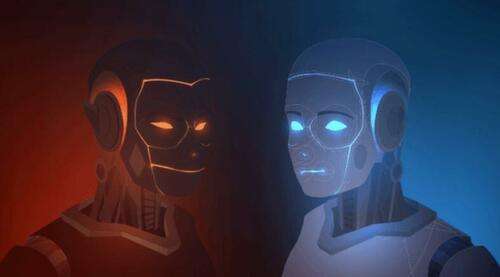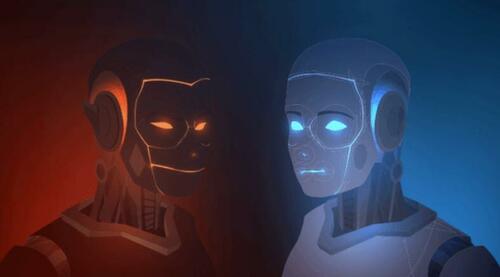Authored by James Rickards via DailyReckoning.com,
ChatGPT and artificial intelligence (AI) are all the rage right now.
In fact, AI and GPT together are almost the only drivers of positive stock market performance today.
A small group of companies with advanced capabilities in AI/GPT (Microsoft, NVIDIA, Google, Apple, and a few others) are rallying sharply on the profit and productivity potential offered by the new technology.
If the AI/GPT plays were removed from stock market indices, the remainder of the stocks would be down on a year-to-date basis. Whether this performance is a bubble or a genuine leap based on fundamentals remains to be seen.
History is filled with investing fads that fizzle out.
Still, there’s no doubt about the impact. That said, GPT has a dark side that is quickly coming to the fore. What do I mean?
Good News for Bad Guys
Malign actors can use the speed and comprehensiveness of GPT to produce fake images and content. They can then push that content into social media and mainstream channels to cause market rallies and crashes.
In other words, for market manipulators, inside traders, and geopolitical adversaries, GPT is one of the best tools ever invented. Here’s a recent case in point…
May 22, a story appeared on ZeroHedge, Facebook, Twitter, and several other media channels showing a large building on fire near the Pentagon along with speculation that a terrorist attack might be underway.
Stocks immediately began to sell off. Within minutes, it was realized that the building fire photo was fake (based on some windows that had an irregular instead of uniform appearance).
And indeed, the entire story was fake.
The image of the building with billowing smoke was generated by AI. Investors should get used to this type of AI-induced panic that can manipulate markets.
The AI/GPT technology is already in the hands of bad actors and they won’t stop using it just because this one fake was detected quickly.
Computer vs. Computer
Most stock trading is done by computers primed to look for keywords in breaking news. This was a case of computers selling stock based on what another computer was reporting with the use of a fake photo and fake news.
It’s computer versus computer using AI/GPT as advanced weaponry. Here’s why that’s so potentially dangerous…
Today, stock markets and other markets such as bonds and currencies can best be described as “automated automation.” What do I mean?
There are two stages in stock investing. The first is coming up with a preferred allocation among stocks, cash, bonds, etc. This stage also includes deciding how much to put in index products or exchange-traded funds (ETFs, which are a kind of mini-index) and how much active management to use.
The second stage involves the actual buy and sell decisions — when to get out, when to get in and when to go to the sidelines with safe-haven assets such as Treasury notes or gold.
What investors may not realize is the extent to which both of these decisions are now left entirely to computers. I’m not talking about automated trade matching where I’m a buyer and you’re a seller and a computer matches our orders and executes the trade. That kind of trading has been around since the 1990s.
I’m talking about computers making the portfolio allocation and buy/sell decisions in the first place, based on algorithms, with no human involvement at all. This is now the norm.
The Demise of Active Investing
Over 80% of stock trading is now automated in the form of either index funds (over 60%) or quantitative models (under 20%). This means that “active investing,” where you pick the allocation and the timing, is down to less than 20% of the market. Although even active investors receive automated execution.
In all, the amount of human “market making” in the traditional sense is down to about 5% of total trading. This trend is the result of two intellectual fallacies.
The first is the idea that “You can’t beat the market.” This drives investors to index funds that match the market. The truth is you can beat the market with good models, but it’s not easy.
The second fallacy is that the future will resemble the past over a long horizon, so “traditional” allocations of, say, 60% stocks, 30% bonds and 10% cash (with fewer stocks as you get older) will serve you well.
But Wall Street doesn’t tell you that a 50% or greater stock market crash — as happened in 1929, 2000 and 2008 — just before your retirement date will wipe you out.
But this is an even greater threat that’s rarely considered…
Shouting Fire In a Crowded Theater
In a bull market, this type of passive investing amplifies the upside as indexers pile into hot stocks like, for example, Nvidia, Google and Apple have been recently. But a small sell-off can turn into a stampede as passive investors head for the exits all at once without regard to the fundamentals of a particular stock.
It’s like shouting “Fire!” in a crowded theater. AI could issue the false alarm that sends investors scrambling for the exits.
Index funds would stampede out of stocks. Passive investors would look for active investors to “step up” and buy. The problem is there wouldn’t be any active investors left, or at least not enough to make a difference.
There would be no active investors left to risk capital by trying to catch a falling knife.
Stocks will go straight down with no bid. The market crash will be like a runaway train with no brakes. It all comes back to complexity, and the market is an example of a complex system.
One formal property of complex systems is that the size of the worst event that can happen is an exponential function of the system scale. This means that when a complex system’s scale is doubled, the systemic risk does not double; it may increase by a factor of 10 or more.
The emergence of AI-generated “fake news” can amplify these market movements.
As the technology improves, which it inevitably will, it’ll become increasingly difficult to distinguish reality from fiction. Stories like the fire near the Pentagon will become much harder to debunk.
Investors need to understand these technological developments before their portfolio holdings are badly damaged.
One thing we can be sure of is that the threat is not going away.








